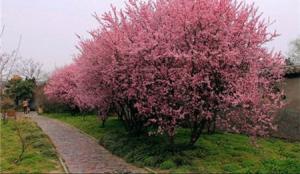Introduction
Bottom watering plants is a popular method of watering where the plants are watered from the bottom up. Instead of pouring water on top of the plant, the plant is placed in a container of water and allowed to absorb the water through the roots. This method of watering has been gaining popularity due to its many benefits.
The Benefits of Bottom Watering Plants
One of the most significant benefits of bottom watering plants is that it ensures the roots are correctly hydrated. The roots of the plant are responsible for absorbing water and nutrients, but when we water from the top, the water may not reach the roots entirely. Bottom watering ensures that the roots of the plant get direct access to the water, helping them to grow healthy and strong.
Another benefit of bottom watering plants is that it can help prevent some common problems associated with overwatering. When we water from the top, it can be challenging to measure the amount of water the plant is receiving. As a result, we often end up overwatering, which can lead to root rot and other problems. Bottom watering plants helps to prevent overwatering as the plant will only absorb what it needs.
Bottom watering plants can also save you time and effort. When watering from the top, it can be a little messy, and water tends to drip on the floor, leaving you with a cleaning job. With bottom watering, you can keep your plants watered, and your floors dry at the same time.
How to Bottom Water Plants
Bottom watering plants is relatively easy. All you need to do is to fill a container with water and place the plant pot in it. Allow the plant to sit in the water for around 10-15 minutes, giving it time to absorb the water. Be careful not to leave the plant in the water for too long as this can lead to overwatering.
If you have a lot of plants to water, you can set up a self-watering system. To do this, you will need to create a reservoir at the bottom of your plant pot by either adding a water tray or a layer of pebbles. Fill the reservoir with water and allow the plant to absorb the water as needed. This is an excellent method for those who travel frequently and may not have someone to water their plants consistently.
When Should You Avoid Bottom Watering Plants?
Bottom watering is an excellent method for most plants, but certain types of plants may not benefit from this method. Plants that require a lot of moisture, such as ferns, may not thrive from bottom watering as it may not provide enough water to meet its needs. Plants that are prone to mold, such as succulents, may also not do well with bottom watering as it can lead to excess moisture.
It is also essential to note that bottom watering fertilized soil can lead to a buildup of salt and other minerals that can harm the plant. If you have recently fertilized the soil, it is best to water from the top to help flush out any excess minerals.
Conclusion
Bottom watering plants is an excellent method that has many benefits. It ensures that plants are correctly hydrated, helps prevent overwatering, and can save you time and effort. While it may not be suitable for all plants, it is an effective way to water most indoor plants. With a little practice, you will find that it is a great way to keep your plants healthy and thriving.

 how many times do yo...
how many times do yo... how many planted tre...
how many planted tre... how many pine trees ...
how many pine trees ... how many pecan trees...
how many pecan trees... how many plants comp...
how many plants comp... how many plants can ...
how many plants can ... how many plants and ...
how many plants and ... how many pepper plan...
how many pepper plan...































